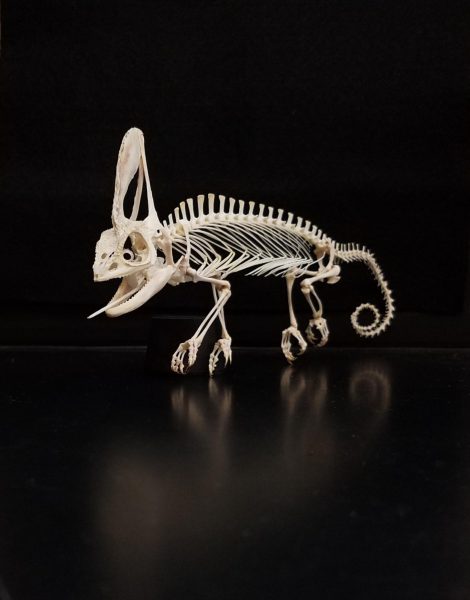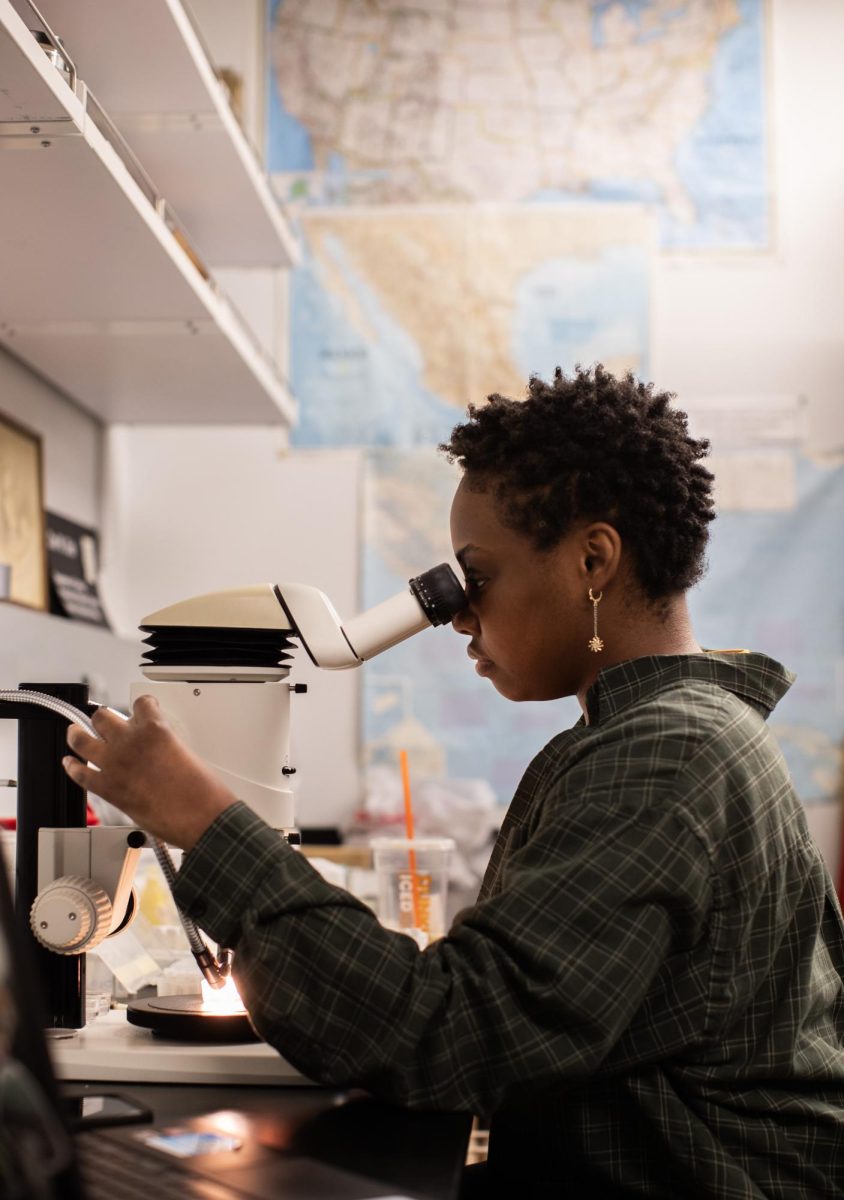WKU biology professor Steve Huskey was approached over a decade ago by another scientist to see if he would be interested in collaborating on a project about chameleons.
That project then led Huskey, fellow WKU biology professor Michael Smith and graduate student Kate Denny to a publication this August, which describes their findings of biotremor communications amongst chameleons.
Kenny Barnett, the researcher that originally approached Huskey, published a paper in 1999 about vibration among chameleons and invited Huskey to research how the chameleons were producing this vibration.
Huskey researched chameleon skeletal anatomy and the function of these structures and invited colleagues who were experts in other fields to participate in this project alongside himself.
“I invited my colleague, Dr. Michael Smith, to get involved, given that his main area of research is fish hearing, which is basically detection of vibrations, so very similar to my work on chameleons,” Huskey said.

Smith and his son visited Barnett at his home in Upstate New York where he kept multiple chameleons as pets. Then, Smith performed an experiment to understand their vibrations by using a machine he brought with him.
A wooden dowel was attached to the machine that created the vibrations, and when the vibration occurred while a chameleon was on the dowel, the animal would stop, showing it understood the present vibration.
“We then attached small accelerometers to the dowel and placed pairs of chameleons on it and recorded their behavior and the vibrations they produced during their interactions,” Smith said. “These preliminary experiments supported our hypothesis that veiled chameleons were using these vibrations to communicate with each other.”
Smith and Denny repeated the prior experiment performed by Smith at a lab at WKU under a more controlled environment with repeatable conditions. The two papers came out of these results, and Denny became the lead author on the papers and completed the research for her master’s degree thesis.
“I also invited a world’s expert on all things chameleon, Dr. Chris Anderson, from the University of South Dakota, to get involved,” Huskey said, “The three of us have made much headway in understanding this novel form of communication in a lizard.”
Smith has spent the past two decades of his career studying the sensory biology of fish hearing. The recent publication was his first non-fish related project.
“It opened my eyes to the importance of vibration in the communication of many animal species, ranging from small ones that produce high frequency vibrations like insects, to large ones that produce very low-frequency vibrations like elephants,” Smith said.
Smith noted that the communication between lizards is referred to as biotremology, which is communication through surface borne communication. The research conducted by the three is completely new territory.
“We have discovered something completely new to science and the first ever ‘lizard language,’” Huskey said. “This may even shed some insight into how dinosaurs may have communicated.”
Smith has also been able to apply the discovery to his work with fish.
“I am studying how mudskippers, which spend much of their time out of the water, communicate with vibrations through the mud,” Smith said.
Smith noted that the communication between chameleons is important, even though humans cannot sense the same thing. In fact, humans cannot sense most language forms that animals communicate through.
“While it is easy for us to see chameleons change colors, we must hold a chameleon or touch the branch that it is on to feel their subtle vibrations,” Smith said. “If this vibration produced sound that our ears could easily detect, this communication channel would have likely been studied long ago in chameleons.”
Huskey said while the intended audience for the publication is fellow scientists and researchers that can continue to move the research forward, the general public is also encouraged to read the papers.
“If we can inspire interest and passion about biodiversity, then we can create momentum to protect it,” Huskey said.
The two papers can be accessed online at “The Journal of Integrative and Comparative Biology.” Students can also email Smith or Huskey for a PDF copy of either paper.
“Investigative research is only useful if the results are revealed to the world,” Huskey said. “If we conduct research projects which never get published, then it is as if they were never done.”
News Reporter Maggie Phelps can be reached at [email protected]


























